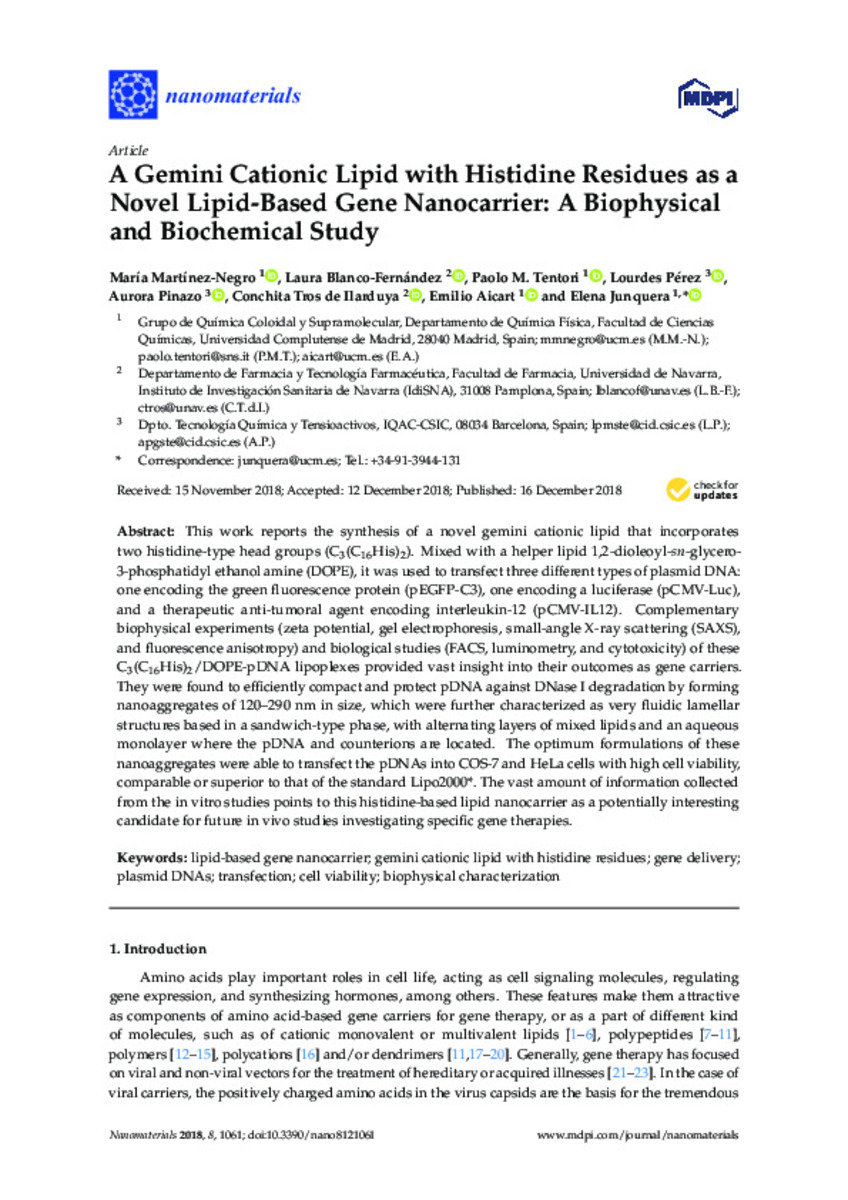A gemini cationic lipid with histidine residues as a novel lipid-based gene nanocarrier: a biophysical and biochemical study
Keywords:
Lipid-based gene nanocarrier
Gemini cationic lipid with histidine residues
Gene delivery
Plasmid DNAs
Transfection
Cell viability
Biophysical characterization
Note:
This article is an open access
article distributed under the terms and conditions of the Creative Commons Attribution
(CC BY) license (http://creativecommons.org/licenses/by/4.0/).
Citation:
Martínez-Negro, M. (María); Blanco-Fernández, L. (Laura); Tentori, P.M. (Paolo M.); et al. "A gemini cationic lipid with histidine residues as a novel lipid-based gene nanocarrier: a biophysical and biochemical study". Nanomaterials. 8 (12), 2018,
Statistics and impact
0 citas en

0 citas en

Items in Dadun are protected by copyright, with all rights reserved, unless otherwise indicated.








